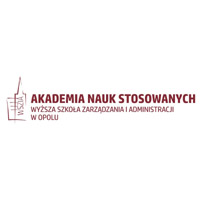Background: Acne vulgaris is one of the most common chronic inflammatory skin disorders encountered in clinical dermatology, affecting up to 85% of adolescents and approximately 10–12% of adults worldwide. Its impact extends beyond physical appearance to include significant psychological and social consequences such as reduced self-esteem, anxiety, and depression, making it a public health problem with notable social and economic implications. The condition originates from a complex dysfunction of the pilosebaceous unit, which comprises the hair follicle, sebaceous gland, and associated duct. Several interrelated mechanisms contribute to its pathogenesis, including excessive sebum production due to androgenic stimulation of sebaceous glands, follicular hyperkeratinization leading to obstruction of sebum outflow and keratin accumulation, and colonization of follicles by Cutibacterium acnes (formerly Propionibacterium acnes), which releases enzymes and irritating factors that intensify local inflammation. Clinically, acne presents with a wide spectrum of lesions ranging from open and closed comedones in mild cases to inflammatory papules, pustules, nodules, and cysts in more advanced forms. Severe forms often lead to scarring and long-term psychosocial distress for affected individuals. Conventional therapies include topical agents such as retinoids (e.g., adapalene, tretinoin), benzoyl peroxide, and topical antibiotics, as well as systemic drugs like doxycycline, minocycline, and isotretinoin [1]. Despite their widespread use and partial efficacy, these regimens have several limitations: prolonged treatment duration extending over several months, limited efficacy against deep inflammatory nodulocystic lesions, frequent adverse effects such as dryness, irritation, and gastrointestinal upset, and the growing problem of antibiotic resistance associated with chronic use. These challenges emphasize the need for alternative therapeutic modalities that are both effective and safe, capable of targeting the deeper pathogenic processes of acne without systemic side effects. In recent years, laser-based technologies have emerged as promising solutions in acne management, offering mechanisms that directly affect sebaceous gland activity, bacterial colonization, and dermal inflammation. Among these modalities, the long-pulsed Nd:YAG laser (1064 nm) has gained substantial attention due to its ability to penetrate deeply into the dermis—up to 5–6 mm—allowing selective targeting of sebaceous glands and perifollicular structures while preserving the epidermis. This photothermal effect reduces sebum secretion, destroys bacterial colonies, suppresses inflammation, and stimulates collagen remodeling, thereby improving both active lesions and residual scarring. Recent studies have demonstrated that Nd:YAG laser therapy not only produces rapid clinical improvement but also enhances overall skin quality and patient satisfaction with minimal side effects. Therefore, the long-pulsed Nd:YAG laser represents a safe, effective, and non-invasive alternative or adjunctive therapy for patients with moderate-to-severe acne vulgaris [2,3]. particularly those who are unresponsive or intolerant to conventional pharmacologic treatments.
Objective:To assess and compare the clinical efficacy and safety of long-pulsed Nd:YAG laser versus conventional pharmacologic treatment in patients with moderate-to-severe acne vulgaris.
Methods:A prospective cohort study included 70 adults (mean age 33.8 years, range 18–58), randomized into two equal groups (n = 35).
Group 1 received topical benzoyl peroxide 5% and adapalene 0.1% once daily plus oral doxycycline 100 mg/day.Group 2 underwent six biweekly sessions of long-pulsed Nd:YAG laser therapy (fluence 15–50 J/cm²; pulse duration 20–50 ms; spot size 6–9 mm; frequency 4 Hz). Acne severity was evaluated using the Global Acne Grading System (GAGS) at baseline, week 6, and week 12. Adverse events were monitored throughout the study.
Results: Both groups showed statistically significant GAGS score reductions by week 12 (p < 0.05). However, the laser group demonstrated faster and more pronounced improvement (p = 0.041 at week 6; p = 0.009 at week 12). By week 12, the laser group achieved a 72.3% reduction in GAGS, compared to 58.7% in the standard therapy group. Mild, transient erythema and edema occurred in 14.3% of laser-treated patients, resolving spontaneously within 24–48 hours. No severe adverse events were observed.
Conclusion: Long-pulsed Nd: YAG laser (1064 nm) is a safe and clinically effective non-invasive treatment modality for moderate-to-severe acne vulgaris. It provides a significantly faster and more substantial reduction in acne severity compared to conventional therapy. The favorable safety profile and ability to target deeper inflammatory lesions make it a valuable alternative or adjunct, particularly in patients resistant to standard pharmacologic regimens.
Reference:
1. Reynolds RV, Yeung H, Cheng CE, Cook-Bolden F, Desai SR, Druby KM, et al. Guidelines of care for the management of acne vulgaris. J Am Acad Dermatol. 2024 May;90(5):1000.e11-1000.e30. https://doi.org/10.1016/j.jaad.2023.12.017
2. Li MK, Liu C, Hsu JTS (2021) The use of lasers and light devices in acne management: an update. Am J Clin Dermatol 22(6):785–800. https://doi.org/10.1007/s40257-021-00624-5
3. Jia X et al Evaluation of the Safety and Efficacy of a fractional picosecond 1064 nm laser for Post-acne Erythema in Adult Chinese patients. Skin Res Technol, 29(1), e13274, January 2023. https://doi.org/10.1111/srt.13274







